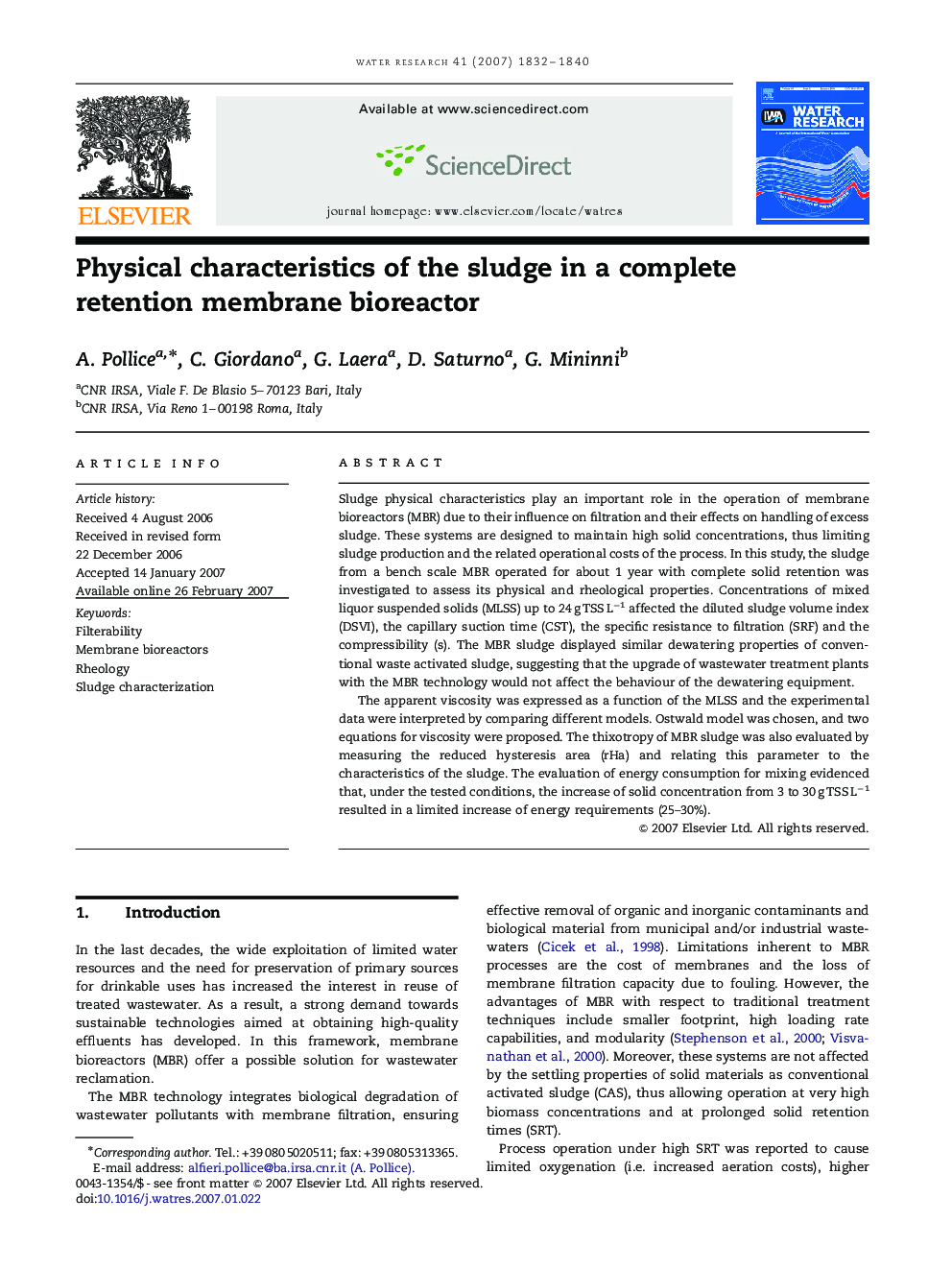| Article ID | Journal | Published Year | Pages | File Type |
|---|---|---|---|---|
| 4485328 | Water Research | 2007 | 9 Pages |
Sludge physical characteristics play an important role in the operation of membrane bioreactors (MBR) due to their influence on filtration and their effects on handling of excess sludge. These systems are designed to maintain high solid concentrations, thus limiting sludge production and the related operational costs of the process. In this study, the sludge from a bench scale MBR operated for about 1 year with complete solid retention was investigated to assess its physical and rheological properties. Concentrations of mixed liquor suspended solids (MLSS) up to 24 g TSS L−1 affected the diluted sludge volume index (DSVI), the capillary suction time (CST), the specific resistance to filtration (SRF) and the compressibility (s). The MBR sludge displayed similar dewatering properties of conventional waste activated sludge, suggesting that the upgrade of wastewater treatment plants with the MBR technology would not affect the behaviour of the dewatering equipment.The apparent viscosity was expressed as a function of the MLSS and the experimental data were interpreted by comparing different models. Ostwald model was chosen, and two equations for viscosity were proposed. The thixotropy of MBR sludge was also evaluated by measuring the reduced hysteresis area (rHa) and relating this parameter to the characteristics of the sludge. The evaluation of energy consumption for mixing evidenced that, under the tested conditions, the increase of solid concentration from 3 to 30 g TSS L−1 resulted in a limited increase of energy requirements (25–30%).
